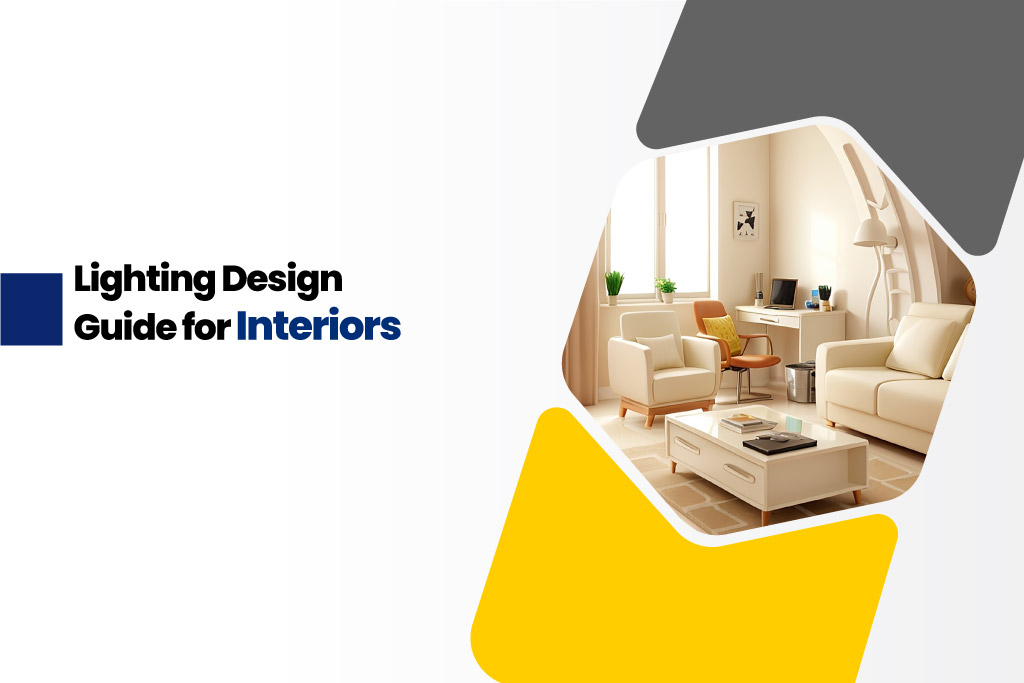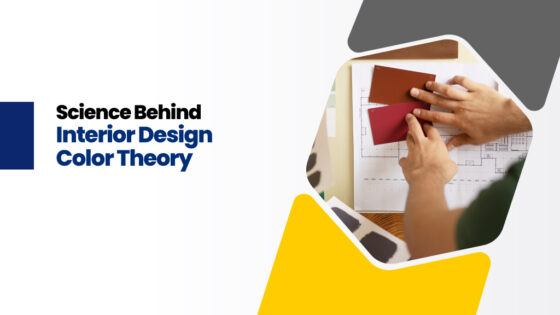Lighting design often becomes the unsung hero of interior spaces. While colours and decor get a lot more attention, lighting is the major reason to set the mood and add depth to the overall design. Today we shed light on the most essential aspect of interior design: lighting. Though lighting concepts are difficult to understand and apply, this guide will help students from the best interior design colleges in TamilNadu understand how to use the best lighting design for interior spaces and create a harmonious space.
Step 1: Understanding the fundamentals
Before delving deep into the topic, it is important to know the basics of lighting. B.Des Interior Design Colleges in Coimbatore equip students with these fundamentals. Lighting design revolves around three key elements:
Ambient lighting: This refers to a room’s general lighting, which establishes a baseline brightness for comfort and visibility.
Task Lighting: Task lighting refers to providing sufficient light for maximum functionality. It focuses on setting up lighting in particular areas of a room, such as kitchen countertops or reading nooks.
Accent Lighting: Accent lighting adds depth and visual appeal to the interior design. It elevates the overall aesthetic of the room by drawing attention to architectural features or decorative pieces.
Step 2: Evaluating Your Space
Every interior space is different, with specific needs and features. When organising your lighting design, keep the following things in mind:
Size and Layout: Evaluate the room’s dimensions and layout to decide where and how to best organise the lighting fixtures.
Natural Light: To balance and enhance artificial lighting, consider the direction and intensity of natural light available throughout the day.
Functionality: Determine the main purposes and events that will occur in the area. The lighting design should be customised to fulfill certain requirements and improve usability.
Aesthetic Goals: Match lighting selections to the overall design idea and goals. Consider the intended space and the aesthetic style of the area.
Step 3: Selecting the Right Fixtures
Now that you have a solid idea of your area and its needs, it’s time to select the right lighting equipment. Here are a few well-liked choices to think about:
Wall Lights: Wall lights provide walls and vertical surfaces with more visual interest and depth by providing adaptable lighting options for ambient or accent lighting.
Floor lamps: These versatile and portable lighting alternatives are perfect for layering light and setting the mood in different parts of the room.
Table Lamps: Ideal for bedside tables or desktops. Table lamps provide intense task lighting and gorgeous accents that warm and highlight the room.
Pendant lights: Pendant lights that hang from the ceiling are adaptable lights that can be utilised for ambient or task lighting. It can also be used as a focal point or statement piece in a design.
Step 4: Experimenting with the Light
After choosing your fixtures, it’s time to adjust the lighting to provide the desired look. Here are some tactics to think about:
Layering: To provide dimension and visual appeal to a space, layer several lighting sources.
Dimmers: Installing dimmer switches will allow you to adjust the lighting’s mood and intensity to suit a variety of activities and preferences.
Colour Temperature: Select light bulbs with the correct colour temperature to produce the desired mood and atmosphere, whether warm and inviting or cold and energising.
Directionality: Pay attention to the direction of light and its effect on objects and people to reduce glare and shadows for maximum comfort and visibility.
Balance: Aim for balance and harmony in the distribution and arrangement of lighting fixtures. This ensures uniform lighting and seamless integration with the overall architectural concept.
Step 5: Bringing It All Together
After installing appliances and implementing your lighting design plan, take a moment to appreciate how your interior space has changed. See how the lighting has improved the atmosphere and aesthetics to create a peaceful space for residents to enjoy. Keep in mind that the process of designing lighting is dynamic and iterative, so don’t be afraid to experiment and refine in order to get the intended result.
For architects and interior designers, understanding interior lighting design is absolutely essential, as it has a big impact on a space’s accessibility and mood. By following this step-by-step guide and taking into account the specific qualities and needs of your area, you can master the art of lighting design and create compelling surroundings that inspire and delight. So let there be light, and let the universe of interior spaces shine through your design goals.
As you pursue your career in architecture and design, remember to look into options for more training and inspiration. Think about enrolling in one of the best B. Des Interior Design Colleges in TamilNadu, where you can connect with peers and gain knowledge from professionals in the field. At the best architecture colleges in Coimbatore, you can fully immerse yourself in the extensive field of interior design theory and practice. With passion and dedication, you can master the art of lighting and convert everyday environments into amazing experiences.






